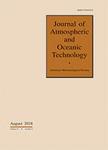版权所有:内蒙古大学图书馆 技术提供:维普资讯• 智图
内蒙古自治区呼和浩特市赛罕区大学西街235号 邮编: 010021

作者机构:Oregon State Univ Hatfield Marine Sci Ctr Coll Earth Ocean & Atmospher Sci 2030 SE Marine Sci Dr Newport OR 97365 USA Harvard Univ Biol Labs Cambridge MA 02138 USA Teledyne Benthos Inc N Falmouth MA USA
出 版 物:《JOURNAL OF ATMOSPHERIC AND OCEANIC TECHNOLOGY》 (J. Atmos. Ocean. Technol.)
年 卷 期:2016年第33卷第3期
页 面:607-617页
核心收录:
基 金:Office of Naval Research [N000140910199]
主 题:Observational techniques and algorithms Remote sensing Field experiments Instrumentation/sensors Surface observations Ship observations Renewable energy Applications
摘 要:Most oceanographic instruments on the seafloor have no connections with the surface and therefore have to run on batteries and store data until recovery. To demonstrate a developing technology, sensors and acoustic modems were powered with energy harvested from the seafloor, and data were relayed acoustically in near-real time to the Monterey Accelerated Research System (MARS) observatory in Monterey Bay, California, and to surface research vessels. MARS is a cabled observatory in deep water (~890 m) at the edge of Monterey Canyon. An acoustic modem was attached to the MARS node and configured to send out commands to, and relay data received from, remote modems. Two benthic microbial fuel cells (BMFCs) positioned approximately 0.5 km away from MARS supplied power to the remote modems and sensors. At their peak performance, these BMFCs produced continuous power densities of ~35 mW m(-2) (footprint area). The modems utilized in this study contained an integrated power management platform (PMP) designed to manage and store the electrical energy generated by each BMFC and to record BMFC performance parameters and sensor data on an hourly basis. Temperature and either oxygen or conductivity sensors were chosen because of their common use and environmental relevance. Acoustically transmitted data records show that the BMFCs renewed energy stores and that the oceanographic sensors measured dissolved oxygen, temperature, and conductivity reliably throughout the operational life of each BMFC system (~6 months). These systems remained in place for more than 12 months.